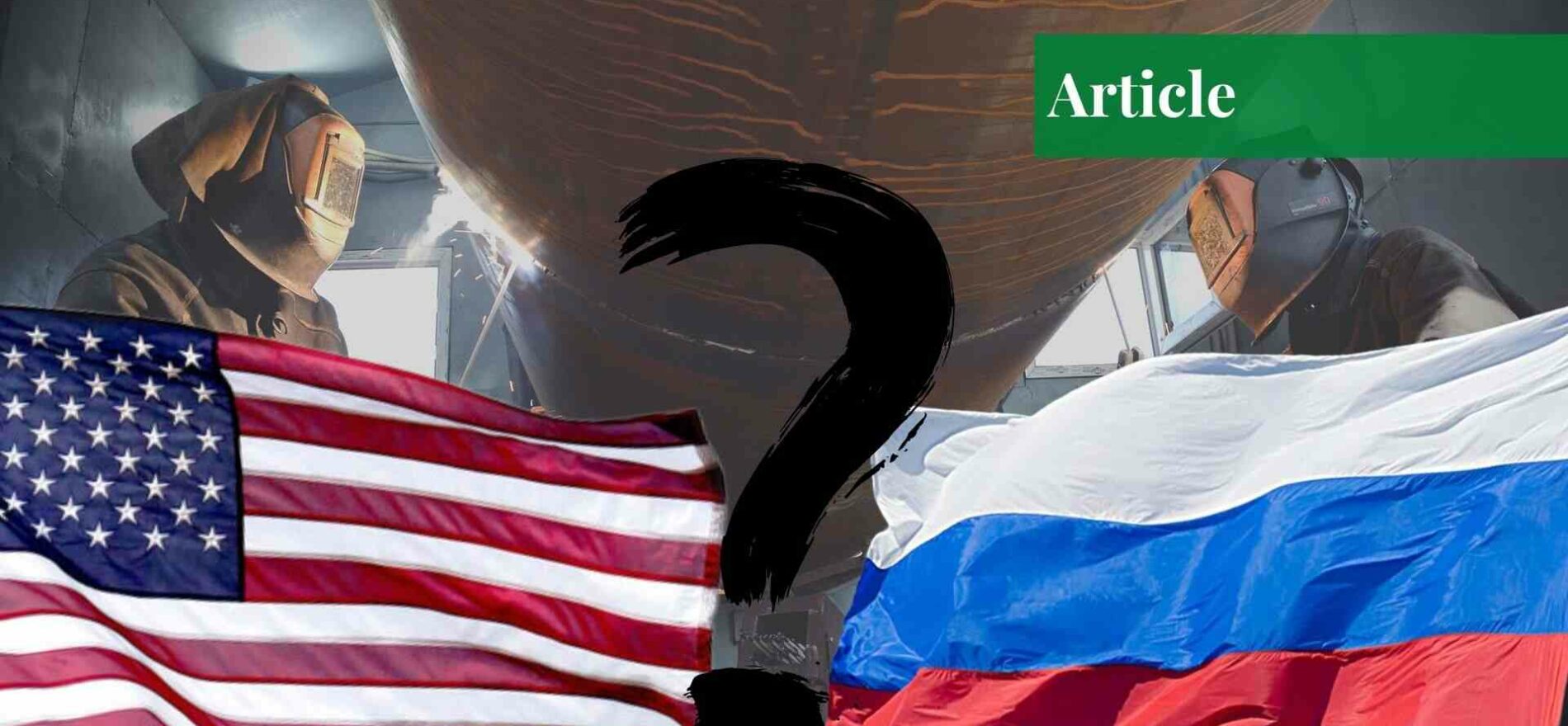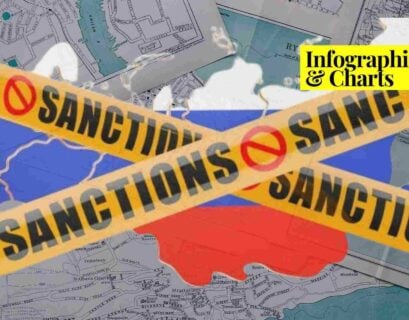Maryam Ibrahim has recently graduated from Lahore College for Women University with a bachelor's in international relations. Her sphere of interest includes the digitalization of international relations, specifically digital diplomacy.
Introduction
The single largest pipeline transporting essential supplies of Russian natural gas to Europe via Germany is Nord Stream 1, which is majority-owned by Gazprom. The gas supply from Russia is crucial to the EU. In the last year, around 40% of the natural gas used in the EU came from Russia. This has decreased dramatically this year, putting pressure on companies that use a lot of energy and driving up commodity costs.

In the past, maintenance work generally went unnoticed, but now that Russia and the West are exchanging economic blows in retaliation for Russia’s full-scale invasion of Ukraine, the pipeline has become a negotiating chip.
What Happened?
As per Financial Times on the morning of the 26th of September, around 2 am local time and then at 7 pm, Danish seismologists recorded two tremors. The pipeline pressure started to drop shortly after that, and Germany noticed it. Gas leaks were found by the F-16 interceptors that the Danish government had ordered to investigate. Later, seismologists confirmed that the epicentres were close to the leaks in the Nord Stream pipelines.
Military crafts, such as the Absalon, were sent by Sweden and Denmark (to keep the civilian ships away). Russian company Gazprom owns the majority of the pipelines, although shares are also held by German, Dutch, and French corporations, and the business is headquartered in Switzerland. At the time, neither of the pipes was in use. As of September 2nd, Russia stopped all deliveries from Nord Stream 1.
The Nord Stream 2 pipeline is new and was supposed to begin deliveries in 2022, but Russia’s invasion of Ukraine caused Germany to suspend the pipeline certification. The damage to the giant steel pipes appears to be the result of multiple separate underwater explosions; the tremors were not consistent with traditional earthquakes, hence, the likelihood of these being accidents is virtually zero.
Although neither pipeline is sending gasoline to Europe, both still have gas under pressure. On the seafloor, 100,000 coated steel pipes with a 24-ton concrete weight make up each pipeline tube. According to Nord Stream, the pipes’ internal diameter is consistently 1.153 metres. The depth of the sections is between 80 and 110 meters.
Each of the two systems, Nord Stream 1 and Nord Stream 2, consists of a pair of lines. Only 3 of the 4 seem to be impacted right present. Off the shores of Denmark and Sweden, a few dozen kilometers apart, three distinct leaks in the Nord Stream pipelines were detected. One line of Nord Stream 2 and both lines of the Nord Stream 1 pipeline were affected. According to reports from seismologists in Sweden and Denmark, both instances had large explosions that were equivalent to 100 kilos of TNT.
The judgment that an act of sabotage, supported by NATO, had been committed was quickly reached by officials in European countries. The conclusion presumably wasn’t too difficult to draw: These kinds of damages to undersea pipelines are uncommon, and for three to occur simultaneously, on the same day, and at the same time as a new gas distribution route to Europe opened, it is highly unlikely. It’s difficult to think that everything is just a coincidence.
Regardless of who is to blame, the leaks in the Nord Stream pipelines are a reflection of how fragile Europe’s energy supply still is. The leaks made the cost and availability of energy more unclear worldwide. European nations have stocked up on natural gas and purchased replacement supplies on the black market at a premium. However, a lot of European enterprises depended on cheap gas from Russia, and the high cost of energy is driving closures and cuts in the industry, with still-developing economic repercussions.
By lowering pool temperatures and shutting off traffic lights, nations and localities are attempting to cut demand. Families across the continent are paying more for energy, even as some worry about gas scarcity. The destruction of the Nord Stream pipelines serves as a reminder that any interruption of energy, whether brought on by chance, a natural disaster, or deliberate action, might exacerbate and prolong the energy crisis in Europe and elsewhere.
Norway, the biggest producer of oil and gas in Western Europe, has sent the military to guard its energy infrastructure. While German grid operators are stepping up the security of their transmission cables, Italian naval forces have enhanced pipeline route monitoring. As the colder, darker winter months approach, the energy crisis in Europe—caused by Russia’s invasion of Ukraine—has moved beyond a concern about supply to one about safeguarding the networks that keep the continent warm and the lights on.
According to the American Center for Strategic and International Studies (CSIS), “the greatest urgent worry will be for the security of pipelines connecting Norway and Europe, notably the recently opened Baltic pipeline.”
Climate Effect
Harm to the pipes on international seas has put ships at risk of “severe environmental damage.” Gas leaks, in contrast to oil spills, pose less of a threat to the neighborhood. The amount of methane, a potent greenhouse gas, that is being released from the broken pipelines is raising concerns among some climate experts that it may have a big influence on global warming. Initial calculations indicate that 500 million cubic meters of gas were lost in total, which is equal to 8 million tonnes of carbon dioxide or 1/5000 of annual world CO2 emissions.
Claims
The Danish and Swedish governments asserted in a joint report submitted to the UN last week that the breaches in the Nord Stream gas pipelines, which may transport gas to Germany, were caused by explosions with the comparable strength of “several hundred kilograms of explosive”. Maria Zakharova, a spokesman for the Russian Foreign Ministry, said that the strikes took place in “countries that are completely controlled by the US intelligence.”
Tucker Carlson, a TV host for Fox News, also suggested that the United States was involved in the explosions. “If you are Vladimir Putin, you would have to be a suicidal moron to blow up your own energy pipeline,” Carlson argued. “That’s the one thing you would never do.” While the US and European officials now describe this as a planned attack, they have not specifically named any suspects. Authorities in a number of nations, including Germany, Sweden, and Denmark, are looking into the leak’s beginnings.

Unofficially, though, a lot of people in Europe are blaming Russia for the sabotage since the EU thinks the Kremlin has a history of attempting to weaponize electricity. As Vladimir Putin steps up his war effort, Moscow undoubtedly has the capability, equipment, and motivation to carry out such an operation. Additionally, Moscow has a motive to maintain applying pressure on Europe. The Kremlin has referred to assigning blame for the leaks of the Nord Stream pipelines to Russia as “dumb and ludicrous,” and it is probably thrilled at the circulating conspiracies that place the blame on the United States.
How Much Time Will it Take to Get Back?
All three of the damaged portions could likely be fixed within a year by a single repair fleet in a typical political and commercial context. It’s probable that the water pumping from the three 1,200-kilometer portions of the pipelines—rather than the undersea work—would provide the largest challenge.
In order to prevent damage to the interior of the pipes when the flow is restored, rock debris would also need to be removed. The condition of the inside polymer coating, which was not intended to endure lengthy exposure to seawater, would be another issue. Although the entire cost might reach billions of euros, it is still a very modest portion of Gazprom’s yearly budget.
Specialized tools would be needed for the job, and in this case, Nord Stream 1 and 2 are operating under quite different conditions. As an officially sanction-free Swiss firm, Nord Stream AG is a part of the Pipeline Subsea and Repair Intervention Pool, which is run by Equinor of Norway and offers its members access to specialized workers and equipment.
However, Nord Stream 2 was approved by the US, and only Russian ships were used to install the pipe. Although the pipeline was finished last year, it was never put into operation because Germany stopped the project in February, only two days before Russia invaded Ukraine. Since the repairs would be made in Danish territorial waters, a work permit from the Danish government would be required. Getting such authorization would undoubtedly be quite challenging given the political climate today.
If work is required to stop environmental or navigational safety harm, a waiver may be granted within the terms of the current penalty. On such a basis, Nord Stream 2 may submit an application, but it is unlikely to be approved. Any repairs will probably have to wait until the conflict in Ukraine is resolved, if not longer.
If you want to submit your articles and/or research papers, please check the Submissions page.
The views and opinions expressed in this article/paper are the author’s own and do not necessarily reflect the editorial position of Paradigm Shift.


















